

Growing tulips in pots is something that is pretty easy to do. Indeed, the tulip is a bulb plant that easily adjusts to this type of growing. The only requirement is to prefer short-stemmed varieties.
Within this category, you might want to try a few of the many species of botanical and early tulips.
Choosing the right pot, the adequate substrate, planting guide and care… Here are the 5 key points to know so that your potted tulips can thrive.
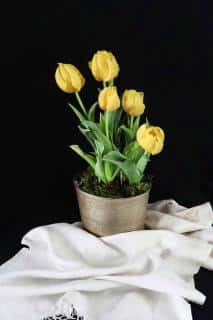 Tulip copes equally well with being planted in either a pot or a garden box. The best tulip pot size is at least 8 inches (20 cm) across, with a depth of 6 to 18 inches (15 to 45 cm). Make sure that whatever you choose, there’s a drainage hole at the bottom. Note that the larger the pot, the more bulbs you can plant. This will give you many more flowers!
Tulip copes equally well with being planted in either a pot or a garden box. The best tulip pot size is at least 8 inches (20 cm) across, with a depth of 6 to 18 inches (15 to 45 cm). Make sure that whatever you choose, there’s a drainage hole at the bottom. Note that the larger the pot, the more bulbs you can plant. This will give you many more flowers!
As for what type of material to use, tulips will grow fine in terra cotta pots, and they’ll do well in ceramic and plastic pots, too. Terra cotta is preferable, though, since it allows for better breathing for the soil than plastic does – a key factor in avoiding stagnant moisture.
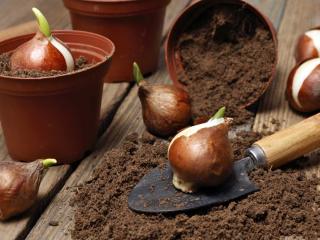
To give the plant the nutrients it needs, feel free to add a bit of ripe compost to the mix.
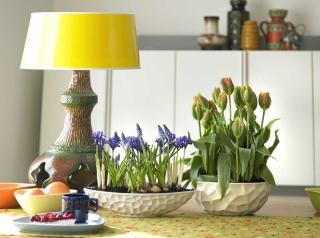
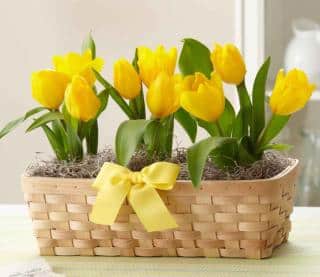
When comes spring, and for the whole summer and fall, move your potted tulips to a sun-filled terrace or balcony. Indeed, whether it’s growing in the ground or in a planter, a tulip will always love full sun! It favors lush growth and blooming.
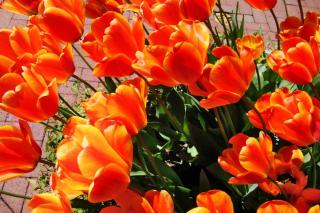
Of similar concern is the type of water you use: best is rain water, or even filtered water. Tap water is generally too full of calcium carbonate for this bulb flower.
Occasionally, provide your tulips with special bulb flower fertilizer: it enhances the blooming. Appearance of the first leaves is the best time to fertilize.
After the blooming, cut the wilted flower stem but leave the leaves until they also turn yellow. This is the time to pull the tulip bulbs out, and to store them in a dry and ventilated space for them to keep until fall again comes around.
More on tulips: